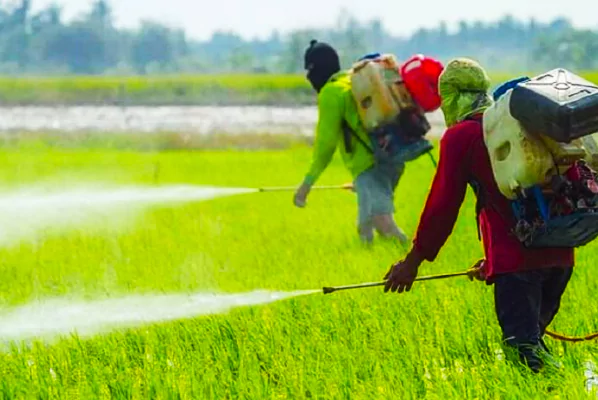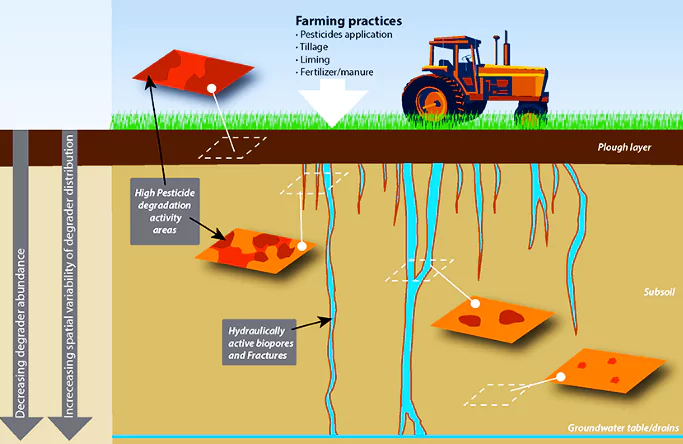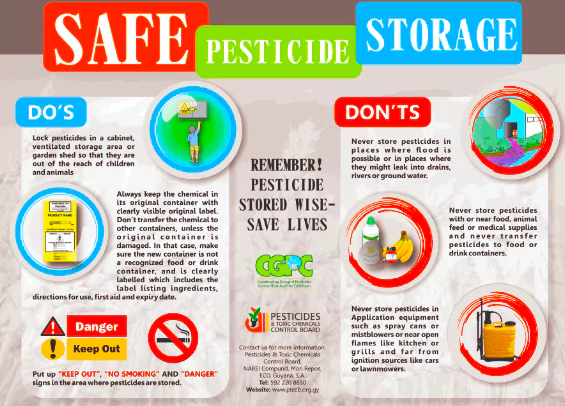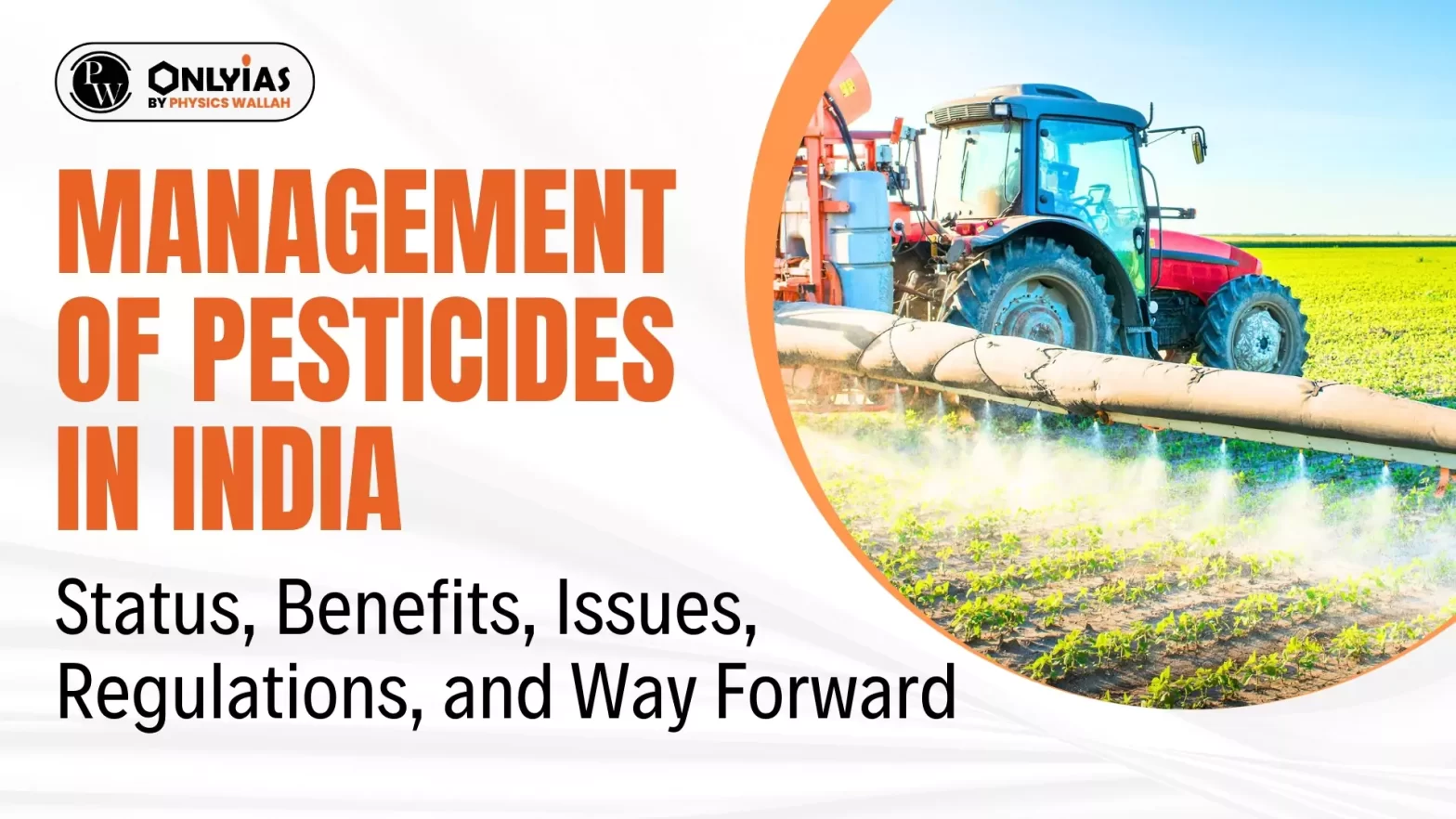Context:
This article is based on the news “How the nod to critical pesticides will bolster India’s agricultural progress” which was published in the live mint. The Agriculture and Farmers Welfare Ministry decided to continue with the use of 24 critical pesticides.
Government’s Decision to Continue Use of 24 Critical Pesticides

- The government of India after an extensive review of 27 pesticides through an appointed Expert Committee decided to continue the use of 24 pesticides.
- The three pesticides banned are Dicofol, Dinocap, and Methomyl.
- This decision has been welcomed and lauded by the agriculture community, including small-holding farmers as they have been already safely using these products for the last decades on multiple crops.
About Pesticides
- A pesticide is any substance or mixture of substances intended for preventing, destroying, or controlling any pest.
Classification of Pesticides in terms of Chemical Classes
-
Organic Pesticides
- They are usually considered as those pesticides that come from natural sources. These natural sources are usually plants, as in the case of pyrethrum, rotenone, or ryania (botanical insecticides)
- They are classified according to their chemical structure, such as chlorohydrocarbon, insecticides, organophosphorus insecticides, etc
-
Inorganic Pesticides
-
- They do not contain carbon elements in their chemical structure. They are typically derived from mineral ores extracted from the earth.
- It includes copper sulfate, ferrous sulfate, copper, lime, and sulfur.
-
Classification of Pesticides by Different Targets of Pests:
-
- Eg, Fungicides – Fungi,
- Insecticides – Insects,
- Herbicides – Plants, and
- Rodenticides – Rodent (mice and rats)
Status of Pesticides In India
- Stats of Pesticides Use: According to FAO, India used over 61,000 tonnes of pesticides in 2020, which is relatively lower than that of Brazil, China, and Argentina
- Currently, 104 pesticides are being manufactured in India among 293 registered pesticides.
- Fourth Largest Producer: India is the fourth largest producer of pesticides in the world. The Indian pesticides market was worth Rs 197 billion in 2018 according to a report by the database Research and Markets.
- Major Exporting Destinations: USA, Japan, China, and Brazil.
- Exported Agrochemical: The most prominent agrochemicals exported include Mancozeb, Acephate, Chlorpyrifos, Cypermethrin, and Profenos.
- States Consuming Most Pesticides: Maharashtra has consumed the most chemical pesticides in India in the past five years at 61, 138 tonnes, followed by UP and Punjab.
Benefits of Pesticides
-
Boost Yield:
- By minimizing crop losses, pesticides enable farmers to produce more food on the same amount of land, contributing to global food security and affordability.
- About one-third of agricultural products are produced using pesticides.
- Without the use of pesticides, there would be a 78% loss of fruit production, a 54% loss of vegetable production, and a 32% loss of cereal production.
-
Enhance Farmer Income and Guarantee Food Security:
- Doubling Farmer’s Income: India has set a goal to double farmer’s income. Higher incomes are a function of two factors – higher yields and lower costs which can be possible by the use of these 24 pesticides.
- Improved Crop Quality: By controlling pests that blemish or damage crops, they can help maintain higher quality produce, allowing farmers to command better prices for their crops in the market.
- Reduced Losses: Pests can significantly damage crops which can be minimized with pesticides and a larger portion of the harvest will reach the market contributing to farmers’ income.
- Insect pests can create crop damage between 20-30% including grains stored in the warehouse.
- Increased Efficiency: By controlling weeds and other pests, they can reduce the need for manual labour in tasks like weeding and pest control. This can not only improve efficiency but also save farmers time and money.
-
Expand the Scope of Export Potential:
- Agri Export Targets: Agriculture accounts for 14% of merchandise exports and the value of India’s agricultural exports was $52 billion in the year 2022-23 according to the Commerce Ministry.
- The ministry has set a target for commodities exports to cross $100 billion.
- Overcoming Export Challenges: To promote agriculture exports the government has already placed curbs on exports of wheat and rice and tightened restrictions on sugar and onion exports.
- According to the Commerce Ministry’s estimates, the continuity of the pesticides will ensure Rs. 10,000 crores of exports.
Issues with Pesticides
- Increased Risk to Human Health: Inappropriate use of pesticides may lead to increased risks to human health and the environment.
 Farmers are exposed to pesticide-contaminated soils via different pathways such as dermal contact, direct ingestion, and inhalation.
Farmers are exposed to pesticide-contaminated soils via different pathways such as dermal contact, direct ingestion, and inhalation.- The most widely known organochlorine pesticide has been associated with health effects, such as endocrine disorders, lipid metabolism etc.
- Soil Degradation: They can also harm the microorganisms that live in soil, which are essential for solid health leading to decreased fertility and erosion.
- From 1990 to 2018, there have been registered amounts of used pesticides by all countries, especially in Asia and America.
- The world average quantity has increased from 1.55 kg per hectare in 1990 to 2.36 kg per hectare.
- Pesticide Runoff: When pesticides are applied to crops, some of them can wash off the plants and into the soil and water. This can contaminate surface water, groundwater and even drinking water supplies.
- In 2017, pesticides were found in 80% of groundwater bodies, with approximately a quarter of these exceeding the regulatory threshold of 0.5 μg/L for total detected and quantified pesticides and their metabolites
- Harmful to Wildlife: They can harm non-target organisms, such as birds, fish, and bees. This can disrupt ecosystems and reduce biodiversity.
- Recent studies prove that pesticides such as neonicotinoid insecticides and herbicides such as glyphosate play major roles in the decline of insects.
Regulations of Pesticides in India
Pesticides are regulated in India through the Insecticides Act 1968 and Insecticides Rules 1971.
- Insecticides Act, of 1968: It was brought with a view of regulating the import, manufacturing, sale, transport, distribution, and use of insecticides and pesticides to prevent the risk to human beings and animals.
- The experiences in administering this act over the last five decades have exposed certain gaps.
- In this context, the Union Cabinet approved the Pesticides Management Bill, 2020.
Pesticide Management Bill, 2020
- Central Pesticides Board: The Central Government will constitute the Central Pesticides Board to advise the central and state governments on scientific and technical matters arising under the act.
- Registration of Pesticides: Persons seeking to import or manufacture a pesticide for ordinary use, agriculture, industry, pest control, or public health are required to obtain a certificate of registration for the pesticide.
- Licences: A person seeking to manufacture, distribute, exhibit for sale, stock pesticides, or undertake pest control operations is required to obtain a licence from the Licensing officer, who the State government may appoint.
- Offences: Under the bill, manufacturing, importing, transporting, storing, etc without a licence or certificate is punishable with imprisonment of up to three years, a fine of up to Rs 40 lakh, or both.
|
Way Ahead

- Cut Down Exposure Risk: Using drones, satellites, artificial intelligence, and sensor-based Internet of Things (IoT) will help farmers deliver more precise doses of pesticides.
- These technologies will make it possible for farmers to spray their fields remotely and cut down exposure risks.
- Safety Advancements: The Agriculture Ministry mentions that the concerns regarding the safety of pesticide use are addressed through rigorous scientific evaluation, showing a significant reduction in the dosage of pesticides used today compared to the past.
- The dosage of pesticides used today is 30-40% lower than in the past.
- Internationally, Indian pesticide products are deemed safe by key export markets like the US, Brazil, Japan, Belgium, Argentina, and Australia.
- As per the Indian Agricultural Research Institute (IARI) “the three-year average (2017-19) pesticide residues found in agriculture commodities was 2.6% compared to developed nations like the US at 2.8%, EU at 4.2%, and the UK at 5.8%
- Greater Say to State Governments: State governments should have the power to regulate pesticides as they have a better idea about the agro-ecological aspects of their state.
- Green Alternative: Today, there are proven, successful alternative agro-ecological methods for pest management, both in India and globally, without the need for chemical pesticides. Continued research and innovation should accelerate the phase-out of chemical.
-
- The government is actively promoting organic farming through schemes like Paramapragat Krishi Vikas Yojana (PKVY) and Rashtriya Krishi Vikas Yojana (RKVY).
Also Read: Farmers Protest 2.0: Are Farmers Demands Unjustified?
| Prelims PYQ (2021):
In the context of India’s preparation for ClimateSmart Agriculture, consider the following statements:
1. The ‘Climate-Smart Village’ approach in India is a part of a project led by the Climate Change, Agriculture and Food Security (CCAFS), an international research programme.
2. The project of CCAFS is carried out under Consultative Group on International Agricultural Research (CGIAR) headquartered in France.
3. The International Crops Research Institute for the Semi-Arid Tropics (ICRISAT) in India is one of the CGIAR’s research centres.
Which of the statements given above are correct?
(a) 1 and 2 only
(b) 2 and 3 only
(c) 1 and 3 only
(d) 1, 2 and 3
Ans: (d) |
To get PDF version, Please click on "Print PDF" button.


 Farmers are exposed to pesticide-contaminated soils via different pathways such as dermal contact, direct ingestion, and inhalation.
Farmers are exposed to pesticide-contaminated soils via different pathways such as dermal contact, direct ingestion, and inhalation.
